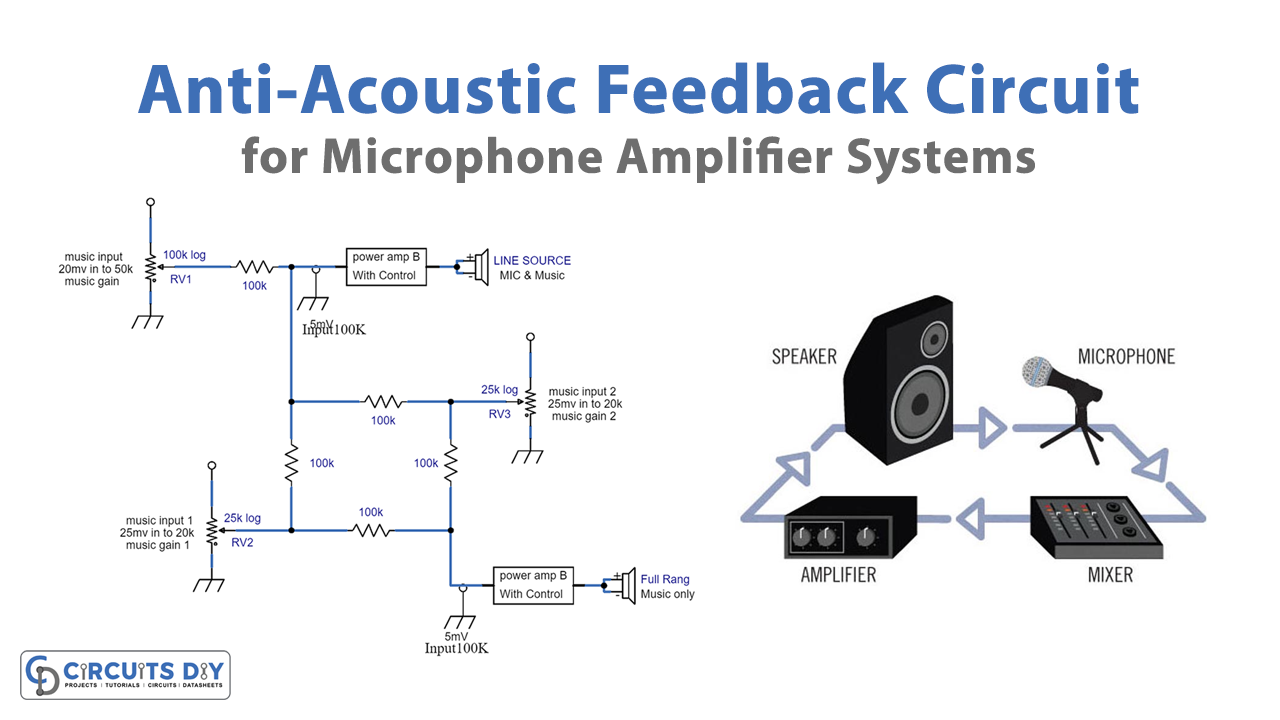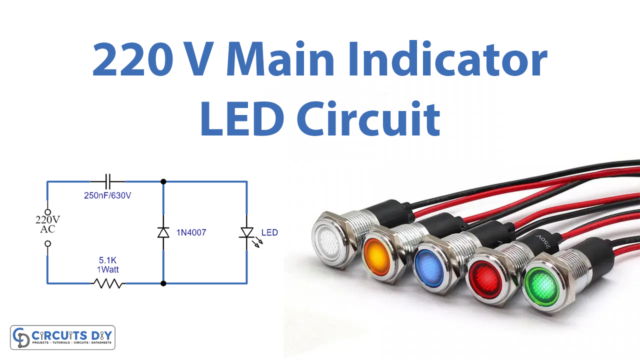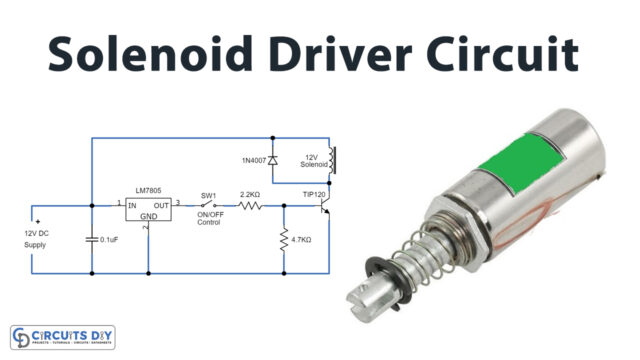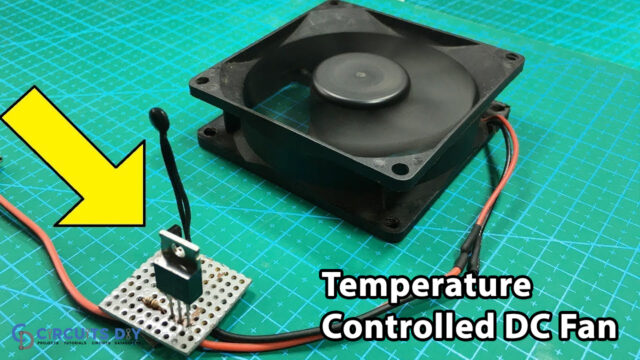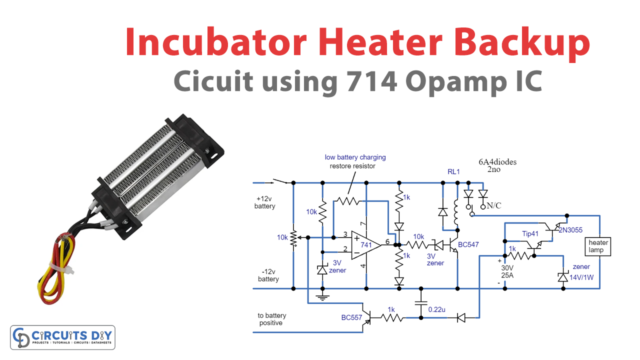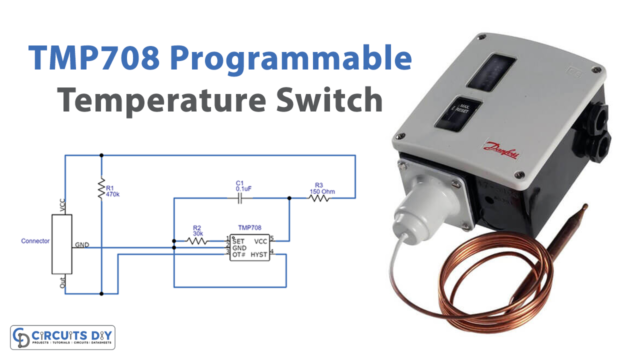Introduction
The use of microphones and amplifiers in various audio applications is widespread. However, a common problem often arises from acoustic feedback, which can result in a loud and unpleasant howling sound. This occurs when the sound from the loudspeakers is picked up by the microphone and fed back into the amplifiers, causing a loop of sound amplification. An anti-acoustic feedback circuit is employed in microphone and amplifier systems to overcome this issue.
This circuit helps reduce or eliminate feedback, ensuring a clear and smooth audio experience for the listener. In this article, we will make and discuss an anti-acoustic feedback circuit and its various applications. So, Let’s dive into this,
Hardware Required
You will require the following hardware for the Anti-Acoustic Feedback Circuit.
| S.no | Components | Value | QTY |
|---|---|---|---|
| 1 | Resistor | 100k | 5 |
| 2 | Variable Resistor | 25k, 100k | 2, 1 |
| 3 | Power AMP Control | 5mV into 100k | 2 |
| 4 | speaker | – | 2 |
Circuit Diagram
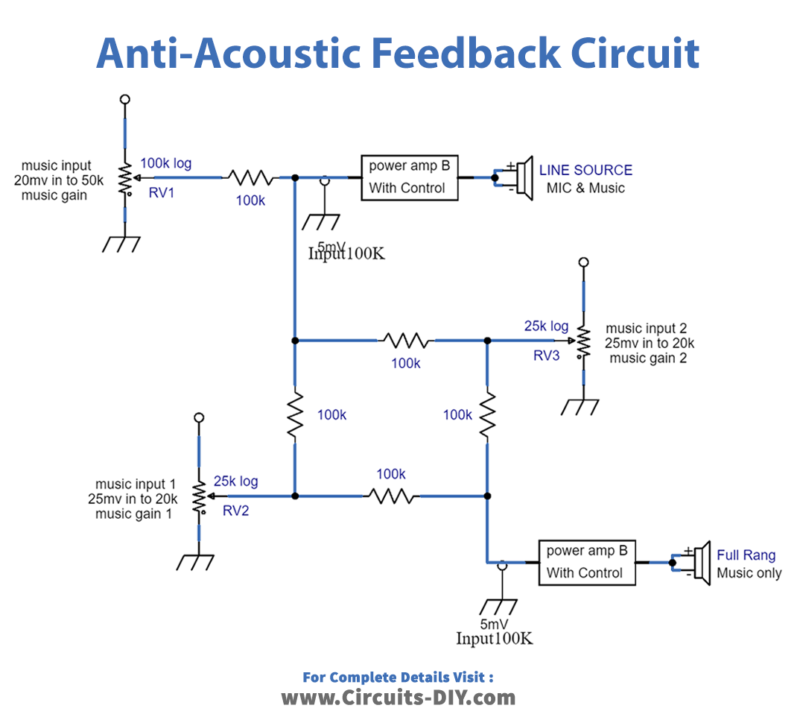
Working Explanation
The Anti-Acoustic Feedback Circuit is a device used to prevent the occurrence of feedback in microphone/amplifier systems. Feedback occurs when sound from the speakers is picked up by the microphone and re-amplified, causing a loud and unpleasant howling sound. The Anti-Acoustic Feedback Circuit uses a passive network to suppress the microphone’s input and minimize the chance of feedback.
The Anti-Acoustic Feedback Circuit consists of three potential dividers that consecutively decrease the microphone signal voltage before it reaches the loudspeaker system. This results in a minimum of 26 dB decrease in microphone signal voltage from the input to amplifier ‘A’ to the input to amplifier ‘B.’ We can adjust the values of the components in the circuit to match different signal levels and impedance. A more advanced “active” system can also be achieved using virtual earth summing amplifier stages.
Final Words
In conclusion, an anti-acoustic feedback circuit is crucial in microphone and amplifier systems. It helps to prevent the occurrence of feedback, which is a common problem in these systems. By implementing an effective anti-acoustic feedback circuit, it is possible to ensure clear and distortion-free audio output in microphone and amplifier systems.


